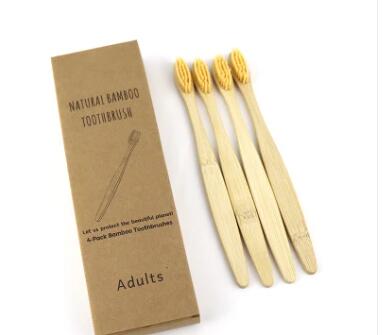How should I choose the right toothbrush and toothpaste
2023-11-03
Choosing the right toothbrush and toothpaste is important for maintaining good oral health. Here are some guidelines to help you select the most suitable toothbrush and toothpaste for your specific needs:
Choosing the Right Toothbrush:
1. Bristle Softness: Opt for a toothbrush with soft bristles. Soft bristles are gentle on the teeth and gums and help avoid damaging the enamel or causing gum recession.
2. Size of the Head: A toothbrush with a smaller head is generally more effective for reaching all areas of your mouth, including hard-to-reach spots.
3. Manual or Electric: Both manual and electric toothbrushes can be effective. Choose the one that you feel most comfortable using. Some people find that electric toothbrushes are more effective at removing plaque and can be a good option for those with dexterity issues.
4. Bristle Shape: Some toothbrushes have angled or contoured bristles, which can help reach and clean teeth more effectively. Choose a shape that you find comfortable and efficient.
5. Handle Design: The handle should be comfortable to hold and easy to grip. Consider ergonomic designs that fit your hand well.
6. Replaceable or Disposable: Consider whether you prefer a toothbrush with replaceable heads or a disposable one. Replaceable heads can be more cost-effective and eco-friendly in the long run.
7. ADA Seal of Acceptance: Look for toothbrushes with the American Dental Association (ADA) Seal of Acceptance. This seal indicates that the toothbrush has met specific standards for safety and efficacy.
Choosing the Right Toothpaste:
1. Fluoride Content: Fluoride is an essential ingredient in toothpaste as it helps strengthen tooth enamel and prevent tooth decay. Ensure your toothpaste contains fluoride.
2. Tartar Control: If you are prone to tartar buildup, choose a toothpaste with tartar control properties to help reduce its formation.
3. Whitening: If you desire whiter teeth, you can opt for a toothpaste with whitening agents. These toothpastes can help remove surface stains but may not change the intrinsic color of your teeth.
4. Sensitivity: For sensitive teeth, select a toothpaste specifically formulated for this issue. These toothpastes often contain ingredients like potassium nitrate to help alleviate sensitivity.
5. Anti-Cavity: Most standard toothpaste contains fluoride for cavity prevention. However, some toothpaste brands may have variations designed for different purposes, so read labels carefully.
6. Natural or Organic: If you prefer natural or organic products, look for toothpaste brands that offer these options. Ensure they still contain fluoride for cavity protection.
7. ADA Seal of Acceptance: Choose toothpaste with the ADA Seal of Acceptance, which indicates that the product has met the ADA's criteria for safety and efficacy.
8. Taste and Texture: Select a toothpaste flavor and texture that you find pleasant. This can encourage you to brush regularly.
9. Medicated Toothpaste: Some toothpaste brands offer medicated options for specific dental issues, such as gum disease or canker sores. Consult with your dentist if you have such concerns.
10. Consult with Your Dentist: Your dentist can provide personalized recommendations based on your oral health needs. If you have specific dental conditions or concerns, seek their advice for the most appropriate toothbrush and toothpaste choices.
Remember to replace your toothbrush every three to four months, or sooner if the bristles are frayed. Regular dental check-ups can also help ensure you are using the right products for your oral health needs.



